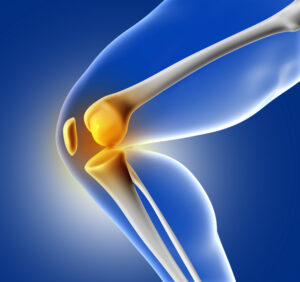Robotic Knee Prosthesis
Subject Summary: It is a procedure used to provide a surgical solution to patients with problems such as pain or limitation of movement in the knee joint. Robotic knee prosthesis The surgery is performed with minimally invasive surgery, a technique using robotic surgical systems.
It may be a less invasive option compared to traditional surgical methods. It could mean patients have faster recovery times and are less likely to experience complications. However, since each patient is different, suitability for treatment should be evaluated on an individual case basis. Before surgery, three-dimensional imaging of the patient's knee joint is performed.
A surgical plan is created by surgeons based on radiological images. During this planning process, the anatomical structure of the patient and the measurements required for correct placement of the implant are taken into account.
What is Robotic Knee Prosthesis?
The knee joint has a complicated structure due to its mobility. It plays an active role especially during daily activities. However, as the years progress, conditions defined as wear and tear on the cartilage are diagnosed.
Joint disorders can be healed quickly and effectively with surgical robotic systems. It is preferred to prevent movement limitation and joint pain.
Robotic knee prosthesis Before the surgery, detailed planning is done on the computer. With the control of doctors specialized in orthopedics and traumatology, the margin of error is minimized.
In Which Situations Is It Applied?
The suitability of surgery should be determined depending on the specific condition of the patient and the severity of damage to the joint. An orthopedic surgeon or specialist doctor will evaluate the patient's condition and perform an evaluation to recommend the most appropriate treatment options.

- Osteoarthritis is a condition characterized by wear and tear of the knee joint cartilage. In patients with severe osteoarthritis, a prosthesis can be fitted to replace the damaged joint and reduce pain. Thus, it can restore mobility.
- Rheumatoid arthritis is an autoimmune disease. It causes inflammation in the joints. Patients with rheumatoid arthritis affecting the knee joints may benefit from robotic surgery methods.
- Post-traumatic injuries: It is a method used in degenerative changes that occur as a result of serious injuries or fractures. Robotic prosthetic surgery can offer a better prosthetic fitting process by providing more precise access to the injured area.
- Other degenerative conditions: Other degenerative conditions of the knee joint, such as avascular necrosis, may require a knee prosthesis. Robotic surgery may provide a better outcome in these cases as well.
How is Robotic Prosthesis Surgery Performed?
Robotic knee prosthesis During surgery, the knee joint is accessed using the robotic surgery system. This system provides precise guidance to the surgeon and helps make accurate incisions. It also provides the surgeon with real-time information to help place the implant correctly.
The surgical intervention process is planned with the help of computed tomography. Prosthesis sizes suitable for the patient are decided. Three-dimensional modeling is created with the help of specially developed software. Thus, the positioning of the implant in robotic systems is determined step by step.
First, the knee joint is cut and damaged bones and tissues are removed. Then, a metal or plastic implant is placed securely into the bones. With the placement of the prosthesis, prosthetic components designed to mimic the natural movement of the knee joint are used.
What are the benefits?
Robotic knee prosthesis surgery may offer several advantages over traditional prosthetic surgery. Here are some advantages:
- More precise placement: Robotic surgical systems provide doctors with precise guidance. It helps to place the prosthesis correctly. This may increase the stability and long-term success of the implant.
- Good planning and measurement: Provides better surgery planning using preoperative imaging and three-dimensional modeling. This way, surgeons can get better guidance to determine the correct incisions and implant sizes.
Less invasive surgery: Robotic surgery generally takes a minimally invasive approach. It allows smaller incisions to be made and less muscle and tissue to be affected. As a result, patients' postoperative pain may be reduced and their recovery time may be shorter.
- Less risk of bleeding and infection: Unlike classical methods, it is performed with smaller incisions. Therefore, it carries less risk of bleeding. Additionally, since surgical robots operate in a sterile environment, the risk of infection may be reduced.
- Faster recovery process: A less invasive surgery and more precise placement often help patients have a faster recovery process. The length of hospital stay of patients may be shorter and the time it takes them to return to normal activities may decrease.
With this, robotic knee prosthesis Surgery may also have disadvantages. The cost of this surgery may be higher and there may be access limitations in some cases.
Because each patient's situation is unique, the suitability of a robotic surgery option is a matter that requires individual evaluation. An orthopedic surgeon or specialist physician should be consulted to evaluate the patient's condition and determine the most appropriate treatment option.
Recovery After Robotic Knee Prosthesis
Robotic knee prosthesis The recovery process may vary depending on the patient's general health condition, the complexity of the surgery, and personal factors. But in general, the following factors are taken into consideration after surgery.
Since it is a less invasive method, patients' hospital stay may be shorter. Typically, patients can stay in the hospital for 1 to 3 days.
Pain management is important in terms of improving quality of life. Patients are often prescribed medications to relieve pain. It is observed that the complaints experienced due to the procedures decrease over time.
Following prosthesis surgery, patients are generally recommended to participate in a physical therapy and rehabilitation program. Physical therapy is performed to strengthen the knee joint, gain mobility and restore the muscles to their former strength. The rehabilitation process may vary depending on the patient's condition and the complexity of the surgery.
There may be some restrictions in the postoperative period. Your surgeon will give you recommendations on what you should and should not do during the healing process. You can limit certain activities or be limited to a certain period of time. For example, you may need to avoid high impact and overly strenuous activities.
Robotic surgery generally offers a faster recovery process. However, since each patient is different, recovery time may vary. The recovery process is expected to take approximately 2-3 weeks. Patients will walk you through exactly what to expect and how to manage your recovery process.
New generation robotic knee prosthesis You can contact our team for more information about the surgery and to be examined.
Frequently asked Questions
What are the advantages of robotic knee prosthesis?
The damaged joint structure is accurately measured by advanced computer systems. In this way, minimal pain is experienced after the operation. It is noted that patients return to their social lives in a shorter time.
How many hours does the operation take?
It varies depending on the person's joint structure and disease size. It is expected to take approximately 1 to 2 hours. You can obtain comprehensive information about robotic surgery systems by consulting your doctor who specializes in orthopedics and traumatology.
Who is it done for?
It can be applied to patients deemed appropriate by the physician after medical evaluation. If you experience severe knee pain and movement restriction, you should be examined by a specialist physician.
How is the life of the prosthesis ensured compared to other prosthetic surgery methods?
The implant is designed to fit the knee joint and muscle tissue using robotic systems. Therefore, it can be used actively for many years.
Why should robotic surgery be preferred?
The margin of error is quite low compared to traditional prosthetic surgery methods. It is created in accordance with the characteristics of the existing knee joint. Therefore, patients' quality of life is positively affected.
Will there be pain after the operation?
Compared to classical knee prosthesis, there is a lower level of pain after surgery. It has been preferred in recent years because it also provides an advantage to patients in terms of recovery time.







 Less invasive surgery: Robotic surgery generally takes a minimally invasive approach. It allows smaller incisions to be made and less muscle and tissue to be affected. As a result, patients' postoperative pain may be reduced and their recovery time may be shorter.
Less invasive surgery: Robotic surgery generally takes a minimally invasive approach. It allows smaller incisions to be made and less muscle and tissue to be affected. As a result, patients' postoperative pain may be reduced and their recovery time may be shorter.